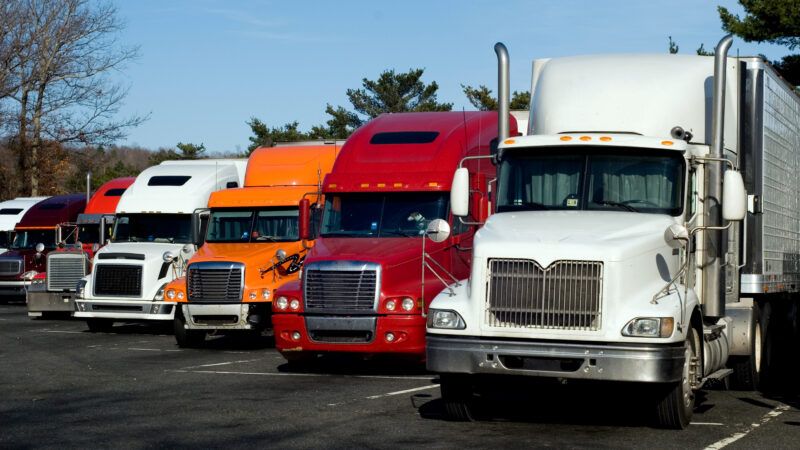The Drug War Is Keeping Truckers Off the Road
Federal regulations make it more likely that a driver can be suspended or fired for drug use, regardless of whether they ever drove unsafely.

Many people are justifiably concerned about the ongoing disruption of the global supply chain. More than 70 percent of Americans have either been unable to get a certain product, or have experienced a delay.
Ever since the beginning of the COVID-19 pandemic, supply has struggled to keep up with demand. Shortages of materials and parts have combined with protectionist trade policies, leading to empty shelves and inflated prices.
But another factor contributing to kinks in the supply chain is a lack of truck drivers. In an October report, the American Trucking Associations (ATA) estimated that the trucking industry was short 80,000 drivers, and the shortage could be twice that by the end of the decade.
Given that deficit, it would make sense to take all steps necessary to open up the pool of qualified candidates. Unfortunately, arcane drug war policies are needlessly holding up the process.
Beginning in 2020, the Federal Motor Carrier Safety Administration (FMCSA)—part of the Department of Transportation (DOT)—implemented new rules for trucking companies and state regulatory agencies. Beginning in January 2020, the FMCSA increased the rate of random drug and alcohol testing for drivers; all drivers who fail a test are required to be entered into the FMCSA's Drug and Alcohol Clearinghouse, a searchable online database, where their records are retained for at least five years. Additionally, employers are required to check all new hires against the database, as well as annually re-checking every one of their employees. A failed drug test can lead to either a mandatory substance abuse evaluation or termination.
While it makes intuitive sense to screen long-haul truck drivers for drunkenness and other substance abuse problems, conflating alcohol with drugs is deceptive. For example, the FMCSA classifies a violation as driving "with alcohol concentration of 0.04 or greater or while using any drug specified in the regulations…other than those prescribed by a licensed medical practitioner." But alcohol is cleared from a person's system within about 12 hours; marijuana, on the other hand, can be detectable days or even weeks after use. Even if somebody used marijuana in a state where it's legal to do so, and allowed plenty of time to make sure they could safely drive, they could still fail a random drug test and be deprived of their livelihood.
And that's exactly what has happened: According to the FMCSA Clearinghouse's monthly report covering through the end of March, drivers tested positive for marijuana more than 10,000 times just this year. From the beginning of 2020, the number of positive tests is over 70,000. That constitutes 70,000 instances in which a driver was taken off the road, with no distinction between whether they were unsafe to drive or had merely used marijuana recently.
Even in states where marijuana is legal for recreational use, federal regulations allow for no distinction. According to the FMCSA, marijuana "continues to be classified as a Schedule I controlled substance" federally, and as a result, "a person is not physically qualified" to drive a commercial vehicle "if he or she uses any Schedule I controlled substance such as marijuana." And despite the Clearinghouse's exception for prescribed drugs, "a driver may not use marijuana even if is recommended by a licensed medical practitioner."
Federal marijuana prohibition is becoming increasingly untenable at a time when nearly two-thirds of U.S. states have legalized its use to some degree. At a time when so much of the economy is still struggling to get back to some form of normalcy, it would make sense to remove all possible barriers to trade. Unfortunately, common sense and genuine need are not enough to overcome the bad policy relics of the war on drugs.